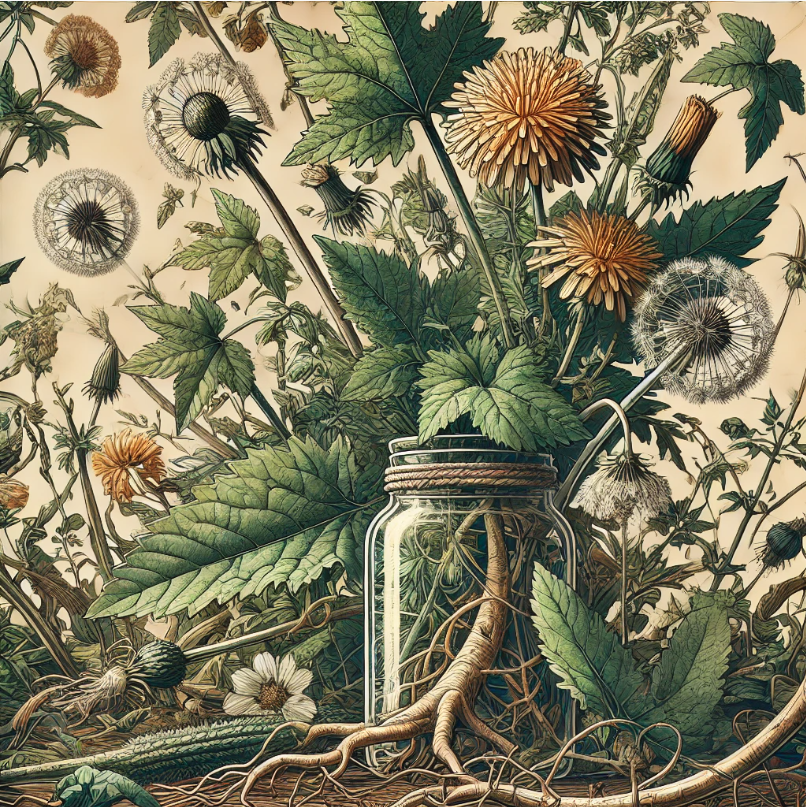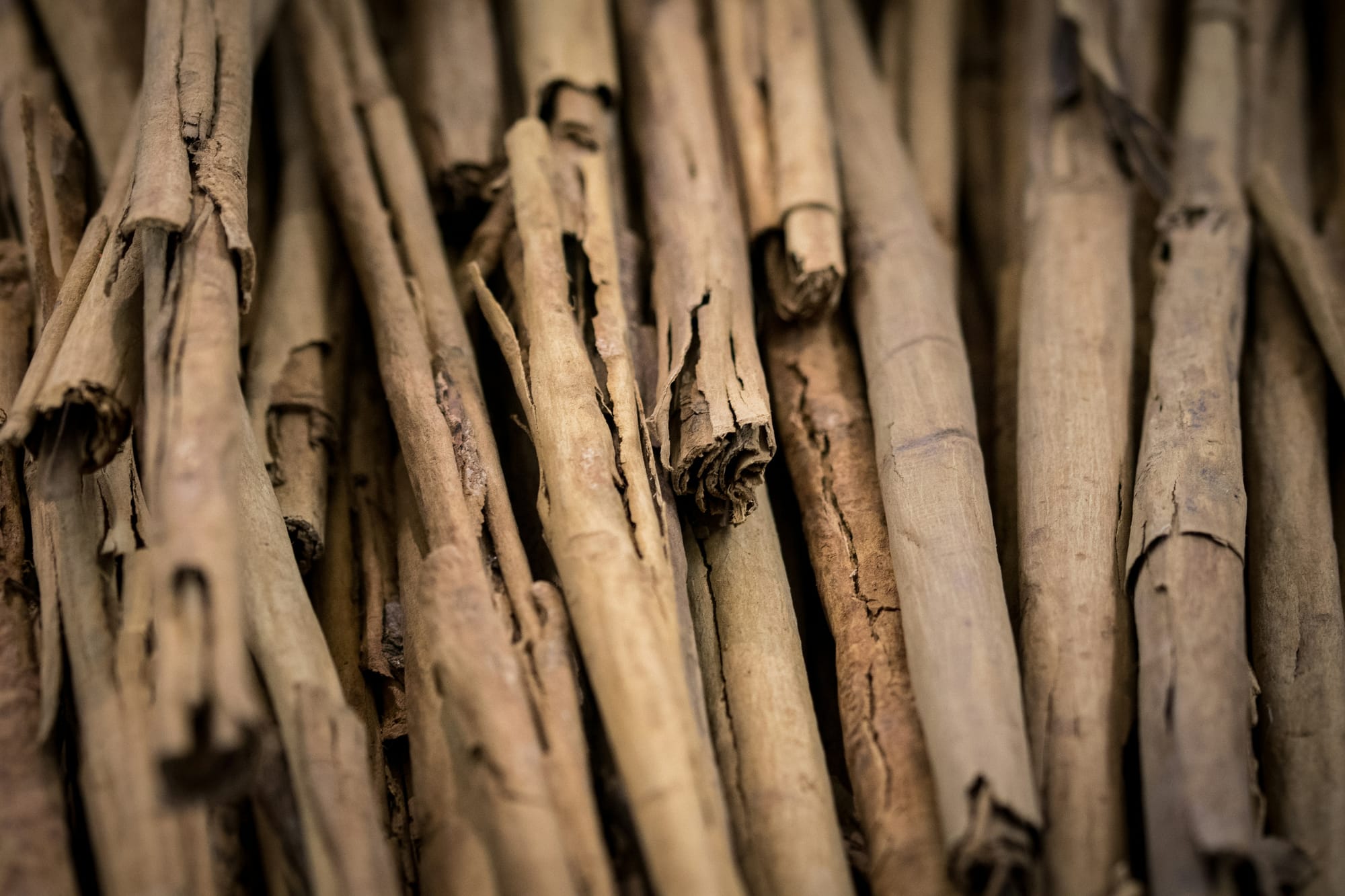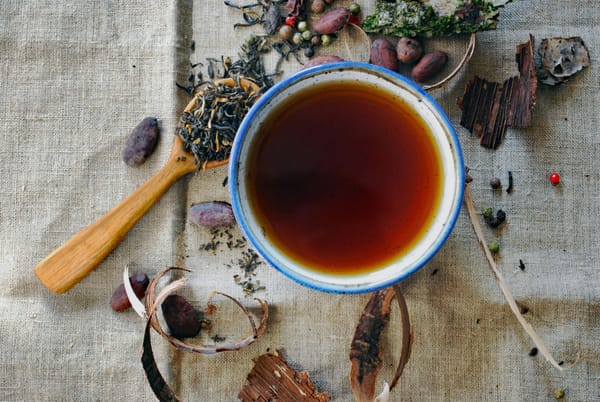Deep in the Weeds: Chai, Cinnamon, and Herbal Wisdom

Where Herbal Traditions and Curiosity Bloom
Welcome to the inaugural edition of Deep in the Weeds! This newsletter is your gateway to the intricate world of herbalism, where tradition meets curiosity and every leaf, stem, root, and berry tells a story. Whether you’re here to explore new remedies, craft your own blends, or simply deepen your connection to the natural world, you’ve found your place.
Deep in the Weeds is the publication of Idle Weeds Apothecary, my herbal products business named after the bold and tenacious weeds that thrive in the roughest places. Weeds are often misunderstood or maligned, but many of them are healing powerhouses, offering a reminder to look beyond the surface and see the potential in everything. This spirit—of abundance, resilience, and transformation—guides both my business and this newsletter.
What to Expect
This newsletter exists to make herbalism simple and approachable for everyone. Whether you're a seasoned herbalist or just curious about natural wellness, Deep in the Weeds offers:
- Knowledge: Demystifying herbal practices and traditions so they’re accessible to all. 🌿
- Guidance: Practical tips and ideas to help you incorporate herbalism into daily life. 🌱
- Connection: Stories and reflections that celebrate our shared journey toward intentional living. 🌼
In each issue, I hope to offer you tools, insights, and encouragement to embrace the power of plants in ways that feel meaningful and personal to you.
Who's It For?
This newsletter is for anyone with a love for plants, a curiosity about natural wellness, or a desire to deepen their connection to herbal traditions. Whether you’re:
- interested in buying thoughtfully crafted products from Idle Weeds Apothecary,
- looking to collaborate on custom herbal formulations for personal or professional use, or
- exploring resources to support your own small-batch herbal creations or home remedies,
we have something for you. My goal is to meet you where you are and help you embrace the power of plants in a way that feels personal and meaningful.
About Me: The Roots of Deep in the Weeds
Growing up in the semi-arid, high-desert climate of the Rocky Mountains outside of Denver, Colorado—traditional lands of the Ute, Cheyenne, and Arapaho peoples—I was surrounded by resilient plants, though I didn’t fully appreciate them at the time. It wasn’t until I moved to the mid-Atlantic, between the Chesapeake Bay and the Appalachian Mountains—traditional lands of the Piscataway—that I began to truly understand and connect with the plants around me.

My experience with plants has grown inside and outside the garden. By now I’m a trained herbalist with a master's degree in herbal product design and manufacture. I use research-based methodologies to formulate recipes and craft handmade therapeutic products. My goal is to help others utilize the plants around them to craft remedies of their own.
In this newsletter, we’ll explore the intricate details of herbalism, and I’ll show you how to cultivate your own herbal practice, regardless of your starting point. This will be a space where we nurture individual growth and foster a community of interdependence, much like the richest ecosystems. Together, we’ll learn how to honor and harness the plants we encounter as powerful allies in our pursuit of health and balance.
Chai: My Favorite Gateway to Herbal Practice
Many of you may have first met me or discovered Idle Weeds Apothecary through a sip of my chai at a maker’s market. Each of my chai blends incorporates not only traditional warming spices and black tea but also other added therapeutic herbs, such as wildflowers for gentle nervous system support or ashwagandha and chaga for vitality and resilience. It’s a perfect introduction to how herbs seamlessly blend flavor and function.
In celebration of the inaugural issue of Deep in the Weeds, I'm giving you all the information you need to make a custom chai blend right at home.
☕ Check out the recipe at this link! ☕
Herb of the Month: Cinnamon
In each issue of Deep in the Weeds, I’ll spotlight a featured herb. This month, I’m inspired by a star of pumpkin spice and my chai blends: cinnamon!

Cinnamon’s Rich Tradition and Modern Use
Cinnamon is a classic spice often associated with the warmth of the holiday season, but it's so much more than just a kitchen staple—it’s a versatile herb that bridges the gap between culinary delight and therapeutic aid. This aromatic bark has been used for thousands of years in traditional medicine systems like Ayurveda and Chinese medicine. Today, its benefits are supported by modern evidence as well, making it a star ingredient for wellness enthusiasts.
Health Benefits of Cinnamon
- Supports Balanced Blood Sugar: Cinnamon is well-known for helping to maintain healthy blood sugar levels, making it a valuable addition to your diet.
- Antioxidant Powerhouse: Rich in antioxidants, cinnamon helps protect cells from oxidative stress.
- Aids Digestion: Its warming nature supports digestive comfort and enhances overall gut health.
Of course, cinnamon’s benefits are vast and varied, extending far beyond the highlights mentioned here. Like many herbs, it cannot be reduced to a series of singular functions or properties. This versatile spice offers countless possibilities for supporting wellness, making it a perfect addition to both your kitchen and herbal toolkit.
Harvesting Tip
Not many of us have a cinnamon tree to harvest from, so when sourcing your own cinnamon, look for high-quality bark from trusted suppliers for the best flavor and potency.
What’s the Difference Between Cinnamon Varieties?
There are a few types of cinnamon commonly available, and in my chai blends, I use cassia cinnamon sticks. Cassia is the most widely and affordably available variety, making it a practical choice for everyday use. Herbalism doesn’t have to be expensive or fancy—it’s about working with what’s accessible and making the most of it. Here’s a breakdown of the main types:
- Ceylon: Delicate, sweet, and lighter in flavor. Known as the “true” cinnamon.
- Cassia: Stronger, spicier, and more commonly used in cooking. Widely available and affordable.
- Vietnamese/Saigon Cinnamon: Bold, intense flavor with a higher oil content, making it especially aromatic.
Each type has its own unique flavor profile, so choosing one depends on your taste preferences and intended use.
Quick Recipes
- Add a stick of cinnamon to your chai or steep it alone for a simple, warming tea.
- Sprinkle ground cinnamon on oatmeal, baked goods, or roasted vegetables for a comforting, aromatic boost.
- Combine cinnamon with honey and hot water for a soothing, immune-supporting drink.
👐 Support Our Journey
One of the best ways to support Deep in the Weeds and Idle Weeds Apothecary is to share this newsletter with someone who may also be on a journey toward natural healing and plant reverence. Together, we can grow a community that values connection, curiosity, and care.
Did someone share this newsletter with you? (They have good taste in friends and reading material alike, I'm sure.) Well, be sure to subscribe!
🗨️ Join the Conversation
I’d love to hear from you! What’s your favorite way to enjoy cinnamon, or is there another herb you’d love to learn more about? Reply to this email or tag us on Instagram @IdleWeedsApoth to share your thoughts and photos. Your feedback and ideas will help shape future issues.
Thank you for being part of this project. Together, let’s rediscover the power of plants.
With care and curiosity,
Lexi
Founder,
Idle Weeds Apothecary
